Multi-species bio-shield for coastal communities
- Proposed areas of implementation
- Potential areas of implementation
Project Partner
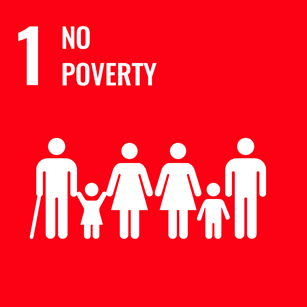
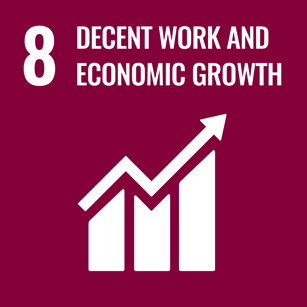
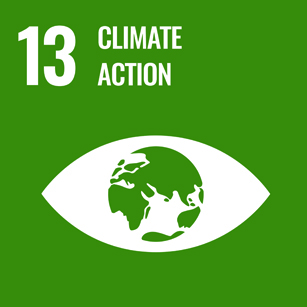
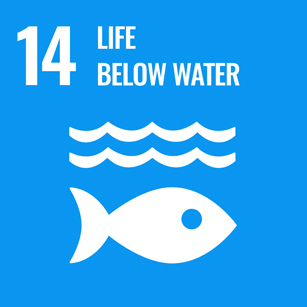
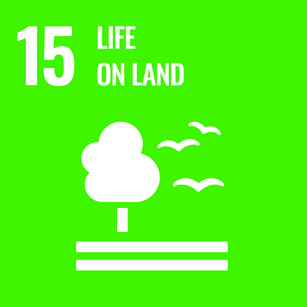
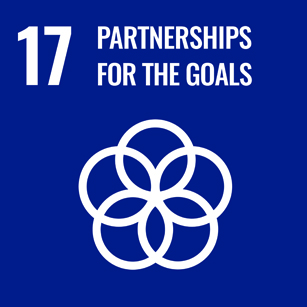
Human-induced climate change is increasing the occurrence of extreme events in India, impacting the lives and livelihoods of millions. Gujarat, situated along India’s western coast, is particularly vulnerable to hydro-meteorological hazards such as droughts, floods, cyclones, and associated ramifications. In fact, 12 out of the 16 coastal districts in Gujarat have been identified as hotspots for tropical cyclones. As climate change persists, with rising ocean temperatures and sea-level rise, the frequency and intensity of these cyclones are expected to increase further.
Furthermore, the coastal communities in Gujarat are heavily dependent on low-return occupations that rely on natural resources, perpetuating a cycle of poverty and debt. Since 1978, VIKAS Centre for Development, an organisation dedicated to improving the quality of life for marginalised communities, has been working to address these challenges. Over time, VIKAS has observed that climate change-induced changes, including rising sea levels, salinity intrusion, and soil erosion, have exacerbated the degradation of natural resources, further compromising the fragile livelihoods of these communities. Consequently, there is an urgent need to mitigate climate risks and enhance the adaptive capacities of both the natural environment and human systems in the region. In response, VIKAS has prioritised harnessing the potential of nature-based solutions.
Since the 1990s, VIKAS has actively engaged in mangrove restoration efforts in the region. In 2016, VIKAS launched the bio-shield initiative as a pilot project, implementing multi-layered plantations of mangroves and other plants suited to saline habitats, aiming to mitigate and adapt to the effects of climate change in Jambusar district, Bharuch. Building on the success of this initiative, VIKAS plans to expand the project by establishing bio-shield plantations across 200 hectares. This expansion aligns with the organisation’s broader Great Green Wall of Gujarat initiative, covering 23 coastal talukas in South and Central Gujarat, as well as the Kachchh and Saurashtra regions. The project’s primary objectives encompass mitigating and adapting to climate change, conserving biodiversity, and enhancing the livelihoods of individuals engaged in fisheries, livestock, and agriculture.
Context
Gujarat, with the longest coastline among Indian states, is highly vulnerable to various extreme climatic events. This vulnerability stems mainly from local climate change drivers like land-use change, deforestation, and encroachments on wetlands and water bodies.
Regions such as Kachchh, Saurashtra, Central, and South Gujarat are particularly susceptible to heat waves, cyclones, and floods. According to Gujarat’s State Action Plan on Climate Change (SAPCC), these areas are projected to experience a temperature rise of up to 5 °C by the end of the century, leading to more severe heat waves and droughts. Additionally, 12 out of 16 coastal districts in Gujarat are prone to tropical cyclones. Although the Arabian Sea experiences fewer cyclones compared to the Bay of Bengal, a study by the Gujarat Institute of Disaster Management indicates a rise in sea surface temperature (SST) in the Arabian Sea, resulting in an increased number of cyclones. Proposed intervention districts, including Kachchh, Amreli, Gir Somnath, Bharuch, Navsari, and Surat, will face heightened risks of cyclones and storm surges. Over the last 50 years, flood events in Gujarat have quadrupled, with Bharuch and Surat identified as major flood hotspots. Moreover, traditionally drought-prone districts like Surat have witnessed a shift towards extreme flood events and storm surges in the past decade.
Given Gujarat’s vulnerability to climate change impacts, it is crucial to prioritise projects that address and mitigate these risks to both people and biodiversity. Nature-based solutions or natural systems/processes, which harness the power of nature to tackle societal challenges like climate change, are a crucial step in the right direction. These solutions encompass protecting, restoring and sustainably managing ecosystems in ways that increase their resiliency and ability to address those societal challenges while safeguarding biodiversity and improving human well-being.
Mangrove forests along the coastlines exemplify nature-based solutions. India has approximately 4,992 sq. km of mangrove forests, with significant coverage in West Bengal (43%), Gujarat (24%), and the Andaman and Nicobar Islands (13%). In Gujarat, mangroves are predominantly found in the Kachchh district, Gulf of Kachchh, and Saurashtra, Central, and South Gujarat regions—areas earmarked for the bio-shield initiative.
Mangroves offer a wide range of benefits. In terms of climate change, they play a crucial role in mitigating its impacts by capturing and storing carbon, with the potential to store up to 10 times more carbon per hectare than terrestrial forests. They also serve as natural defenses against soil erosion, storm surges, and saltwater intrusion, enhancing climate adaptation and improving soil productivity. Mangroves are biodiversity hotspots, hosting a diverse range of aquatic and terrestrial species that adapt to varying conditions such as salinity, tidal amplitudes, and soil characteristics. They provide habitats for various flora (such as sea grasses, marine algae, bacteria, fungi) and fauna (including crustaceans, fish, reptiles, amphibians, and birds). Mangroves are vital food resources for coastal communities, promoting nutritional diversity and dietary intake. Moreover, they offer opportunities for income diversification through non-timber forest produce (NTFP), fodder, fisheries, beekeeping, and more.
There are several notable examples of mangrove plantations across India, particularly along the western coast. These include the urban port of Mundra in Kachchh district, rural coastal areas in Surat district in Gujarat, Raigad district in Maharashtra, and Kannur district in Kerala.Mangrove plantations have received a fillip through the Government of India’s announcement on the Mangrove Initiative for Shoreline Habitats and Tangible Incomes (MISHTI) in February 2023; MISHTI focuses on mangrove plantations along coastlines and saltpan lands. While state-level actions are essential, the announcement from the Union government is a welcome boost for large-scale plantation and restoration of mangroves, as MISHTI can potentially attract private resources, carbon, and biodiversity offsets.

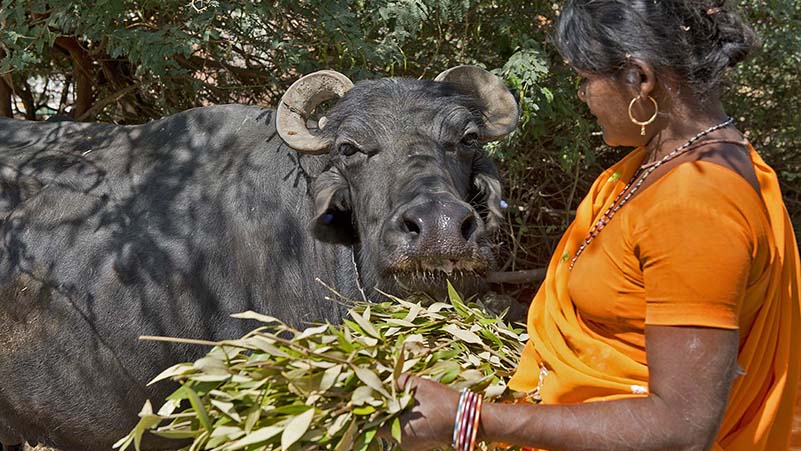
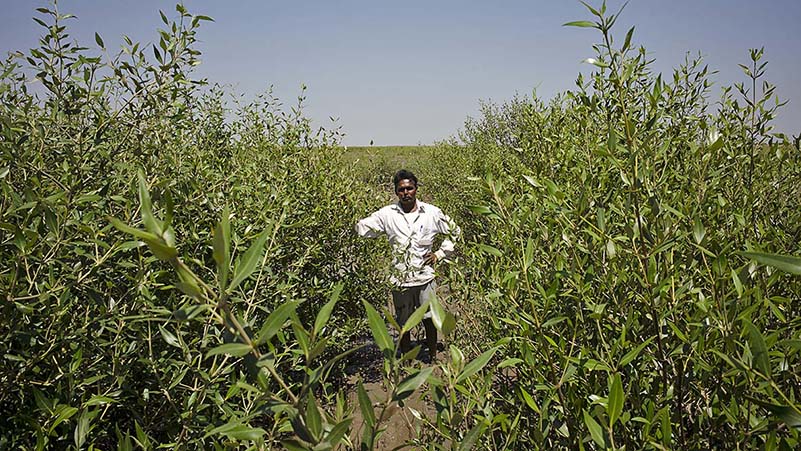


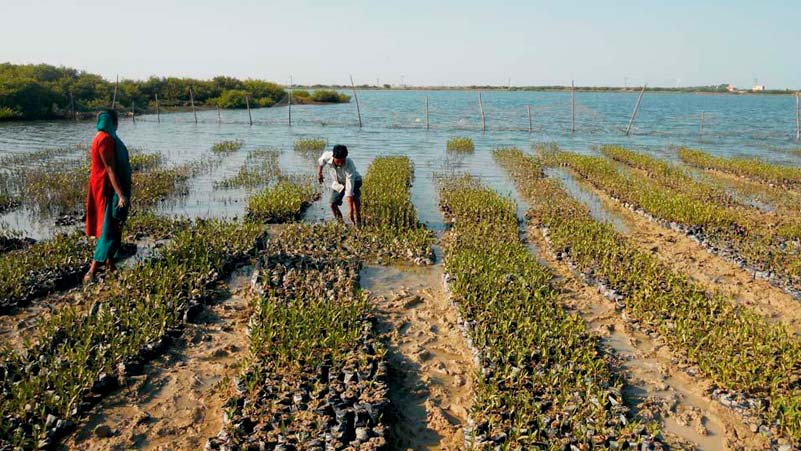
Problem statement
The proposed coastal locations for the bio-shield initiative—Kachchh, Saurashtra, Central, and South Gujarat—are highly susceptible to extreme climate events. In addition to being hotspots for multiple climatic hazards, the coastal districts in these regions suffer from the degradation of natural resources. Challenges such as salinity ingress, waterlogging, soil erosion, low natural fertility of the land, and poor groundwater quality contribute to the vulnerability of these areas.
Many communities living along the coast are marginalised—these include landless labour, small and marginal farmers, fisherfolks, small salt producers or labourers, charcoal makers, and industrial workers. These communities rely on low-investment, low-return occupations dependent on natural resources, such as agriculture, animal husbandry, and fisheries. Unfortunately, they are caught in a cycle of persistent poverty and indebtedness.
Since its establishment in 1978, VIKAS has been actively working in the coastal taluka of Jambusar in Bharuch district to enhance the quality of life for marginalised communities. Over the years, VIKAS has witnessed the adverse impact of climate-induced changes, including rising sea levels, salinity ingress, storm surges, water currents, and strong winds, on the already degraded land in the area. Consequently, these environmental changes have further weakened the fragile livelihoods of these communities. For instance, the increased variability in temperature and rainfall patterns has had detrimental effects on the income of small and marginal farmers who rely on rainfed agriculture for their sustenance. Likewise, coastal communities heavily dependent on income from livestock, primarily small ruminants like goats, but also large ruminants like cows, have experienced reduced fodder availability due to climate-induced effects on soil quality, thereby affecting their income.
Given the circumstances, mitigating climate risks and enhancing the adaptive capacities of both natural and human systems have become crucial. Coastal forests, particularly mangroves, hold immense potential in addressing these needs. They play a vital role in combating global warming, mitigating the impact of extreme events like cyclones, and providing sustainable livelihood opportunities for local communities. Moreover, mangroves serve as biodiversity hotspots, characterised by rich genetic diversity and hosting numerous endemic species of flora and fauna.
Gujarat boasts the second-largest mangrove cover in the country, spanning approximately 1177.27 sq. km. This distribution is as follows: (a) Kachchh district accounts for 67.5% of the total mangrove cover, (b) the Gulf of Kachchh covers 20%, (c) Saurashtra represents 0.48%, and (d) Central Gujarat and South Gujarat, including the Gulf of Khambhat-Dumas Ubharat areas, make up 12% of the mangrove cover. Additionally, Gujarat is home to nearly 15 species of mangroves. Avicennia marina is the most dominant and exclusive species found in the Gulf of Kachchh, Saurashtra, and Central Gujarat. Other species, such as Avicennia officinalis, Avicennia alba, Ceriops tagal, Rhizophora mucronata, and Rhizophora apiculata, are found in South Gujarat.
Recognising the manifold benefits of mangrove plantations, VIKAS has been actively involved in the plantation of mangroves in Bharuch district and other coastal regions of Gujarat on land owned by the revenue department since the 1990s. In 2016, VIKAS initiated the bio-shield initiative in Jambusar taluka, which involved the establishment of a multi-layered green wall comprising mangrove plantations and other salt-resistant plant species. The objectives of this initiative were to address climate mitigation and adaptation, conserve the ecological balance, and enhance community livelihoods.
After completing five years, the project has demonstrated promising outcomes in terms of high survival rates of plant species, the creation of wage employment opportunities, and an increase in household income (for further details, refer to the Approach section). The proposed project will build upon the knowledge and experiences gained from the successful implementation of the initiative in Jambusar taluka.
Mangroves serve as habitats for various types of flora, including sea grasses, marine algae, bacteria, and fungi. They also provide a sanctuary for diverse fauna, including crustaceans, fish, reptiles, amphibians, and birds.
Goals and objectives
The bio-shield initiative—a nature-based solution—aims to address the climate crisis from both mitigation and adaptation perspectives. Its primary objective is to protect, restore, and sustainably manage natural ecosystems, with a specific focus on mangrove plantations and native vegetation found in coastal flatbeds and tidal wetlands. Through this initiative, the aim is to harness the inherent capabilities of these ecosystems to effectively combat the societal challenges posed by climate change, ecological degradation, and poverty.
The minimum viable scale for the proposed project encompasses 200 hectares distributed across 23 talukas in 10 districts within the regions of Kachchh, Saurashtra, Central, or South Gujarat. Across these 23 talukas, 58 plots or locations suitable for the bio-shield initiative have been identified, covering a cumulative area of 28,680 hectares. This initial scale serves as a foundation for the project’s implementation. However, it is important to note that the project has the potential to be expanded further to encompass a larger area if deemed necessary or beneficial.
Specific objectives of the project include:
- Mitigating the effects of climate change through the sequestration of carbon by mangrove plantations;
- Protection of coral reefs, sea-grass beds, and habitats and nutrients for a diverse range of flora and fauna;
- Adapting to the effects of climate-induced risks such as tropical cyclones and associated events such as storm surges, water currents etc.,with the bio-shield acting as a natural barrier against these risks, and
- Enhancing income generation through nature-based livelihoods (agriculture, livestock, fishery, NTFP), improving nutritional levels to build resilience, and improving the well-being of local, marginalised communities through regeneration of mangrove ecosystem and fodder-generating plants.
About the organisation
VIKAS is a development organisation dedicated to improving the lives of marginalised communities in Gujarat. Their vision is to bridge community needs with state and industry resources, with a focus on environmental enhancement, livelihood advancement, education, health, and water and sanitation.
VIKAS implements programs that foster their development by addressing the felt needs of economically marginalised groups, including agricultural laborers, farmers, fishermen, and industrial workers. Their strategy emphasises environmental and institutional sustainability, placing a strong emphasis on participation and empowerment, particularly among local women.
Operating in villages within Bharuch and Surendranagar districts, VIKAS positively impacts approximately 6,000 marginalised families across 70 villages. They invest their efforts and resources in improving the local environment and establishing village-level organisations, ensuring the long-term sustainability of their initiatives.






